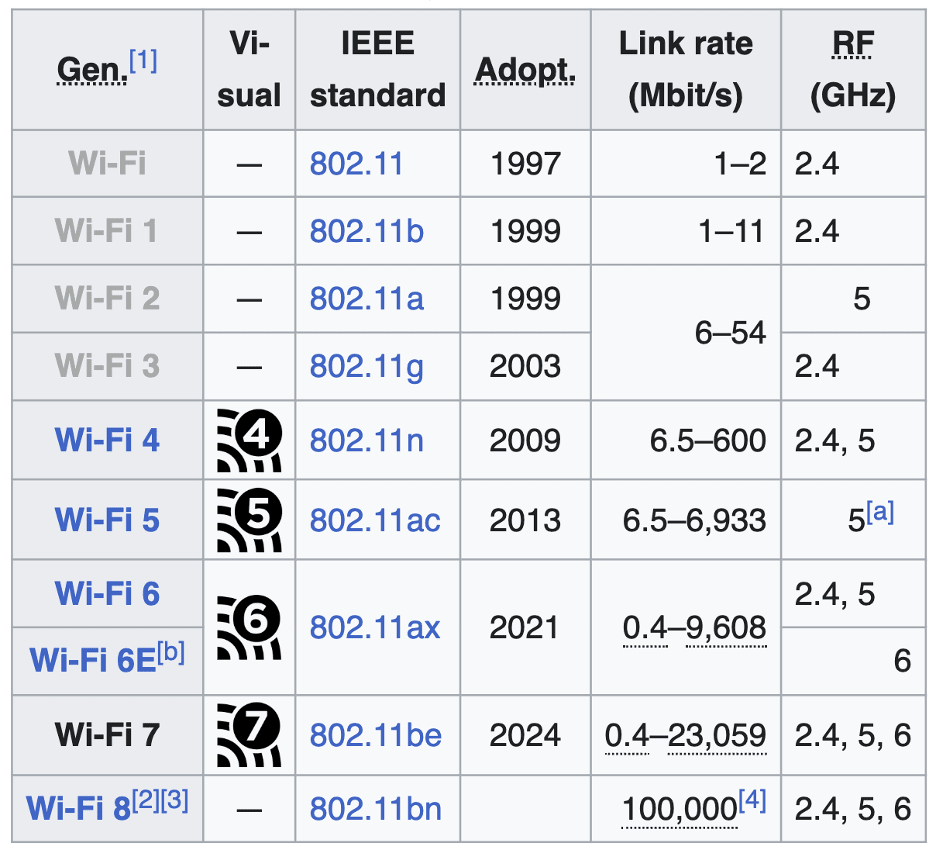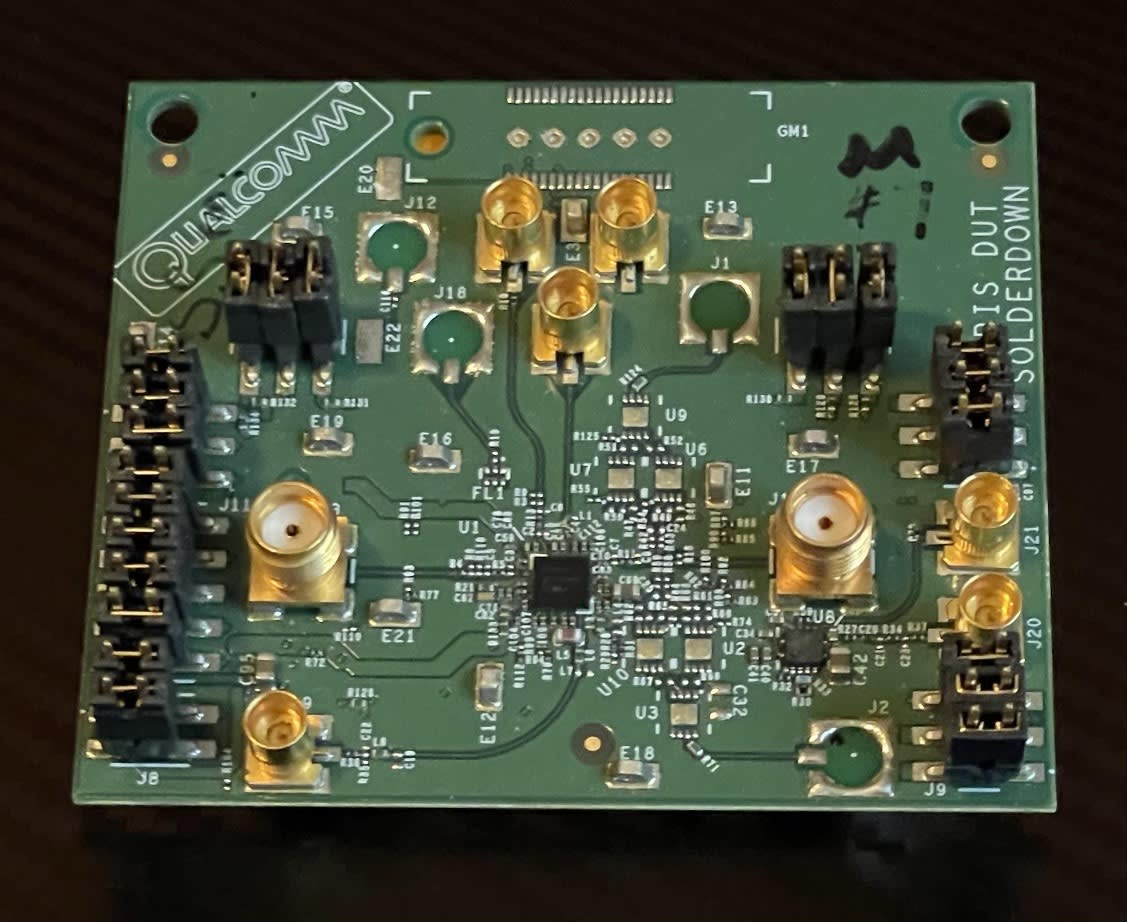Regarding WiFi and Bluetooth Devices
The physical world works in mysterious ways. Harnessing those cosmic design rules allows us to bridge the open air space with an invisible data pipe. Almost any metal object can be an antenna. As long as you accept that, the mysteries of the wireless world will not surprise you as much.
A Very Brief History of Wireless Communication
Guglielmo Marconi is noted for putting voices over the airwaves beyond the line of sight. We've had 100 years to get used to it but it's still magic to most folks. The wireless century was preceded by 60 years of Morris Code over wire. Before that, we were riding ponies and releasing homing pigeons to spread the news.
In an historic sense, it wasn't all that long ago. Think about how many generations of humans lived out their lives before electronics got started. The revolution happened in a rush and the wave has been building ever since. It's hard to fathom where we'll be in the year 2030 let alone 2080.
So, let's plan ahead for 2030 or thereabouts. We can only hope that our products will have a five-year life span in today's fast paced world. There are always preliminary specifications floating around that shed a little light on what is to come.
Once those specs are put in use, the standards are once again reevaluated for areas of improvement for lower cost along with higher performance and durability. It's based on continuous improvement which, by definition, never rests.
 Figure 1. Each functional block of this test mule lives in its own faraday cage. Holes in the lid allow for ventilation while being too small to allow any spurious signals to pass through. This is all in the name of coexistence. Image Credit: Author.
Figure 1. Each functional block of this test mule lives in its own faraday cage. Holes in the lid allow for ventilation while being too small to allow any spurious signals to pass through. This is all in the name of coexistence. Image Credit: Author.
The IEEE 802.11 Spec: A Roadmap to the Future of Wireless Connectivity
WiFi is as good of an example as any to show advancements in technology. After using up the alphabet on IEEE 802.11 variants, we only productized a, b, g and n specifications before moving on to a two-letter system.
The majority of the initiatives never got beyond the drawing board. Before long, 802.11ab was all the way up to ax and the whole thing had to move on to starting with 802.11b-something. The next step is IEEE 802.11be, which is known as the WiFi 7 standard.
The trend of cycling new technology into the specifications is bound to continue along with global development. The unrelenting pace of progress means that the specs will continue to splinter along technological and geographical lines.
Something that sets WiFi apart is the use of so many different frequencies. The Federal Communications Commission defines the boundaries in the United States while every other country is free to set their own standards.
2.4GHz, The Place Where WiFi Started
It started in the crowded 2.4 GHz range which is basically a free-for-all. There are 14 different channels in that range but there is overlap between each channel so most of them are not actually available at the same time and place. Even with those limitations, it has better data rates than the ones that run at MHz frequencies.
The 2.4 GHZ band is also the frequency domain of microwave ovens, garage door openers and my wireless microphone among many other popular products. It's been proven that the power is far too low to fry your brain.
Enter 5GHz; Broadband Wireless That Could Rival Ethernet Speeds of the Day.
Around the turn of the century, 5 GHz was added to the mix. It has 23 channels that are considerably wider with space between for higher fidelity. Those 20 MHz lanes can also be combined to create still higher bandwidth channels as long as there's no traffic in the way.
The design rules are basically the same as for 2.4GHz although the consequences that follow a discontinuity will be greater. As the frequency rises, it becomes more important to have a pristine layout. A little more air gap goes a long way in this case.
I was recruited into Airgo Networks at this time. We released a pre-802.11n router before the spec was actually ratified. That MIMO OFDM (Multiple Input Multiple Output - Orthogonal Frequency Division Multiplexing) technology became the basis of the "n" specification. Sometimes, a little startup with 80 people can change the world. Our reward was being acquired by Qualcomm which worked out even better than an IPO in my opinion.
Another Leap Forward to 60GHz, Now It's Time To Get Serious.
Finally, the V-band at 60 GHz is in play. There are numerous channels in each of those broader frequencies. The bandwidth is only possible to transmit or receive if it is not already in use. Again, spectrum utilization varies by region.
In this case, we don't get as many channels but each one can be roughly 2Ghz wide. You can imagine that would be much faster than anything centered around 2.4GHz and 5GHz bands could provide.
Channel Hopping For Better Signal Integrity and Security
Having the ability to dynamically allocate channels based on what's happening on adjacent frequencies is a game-changer. The more choices we have, the better for the consumer. It's not always better for the board designer. Each of those frequency bands could require its own diplexer or complete transceiver and possibly an antenna. WiFi 7 brings us "ultra-wide bandwidth" of 320Mhz. The marketing term for this level of data transmission is "Extremely High Throughput". That is well beyond the 20MHz of the good old days.
MIMO, (Multiple Input/Multiple Output) More Channels For More Users
One channel isn't enough for the required throughput so we have Multiple Input/Multiple Output or MIMO radios under the hood. The configuration is typically asymmetric with more receive chains than transmit chains.
So maybe we find three receivers and two transmitters in one baseband chip. The matching network for these data streams will include RF switches that send the data to different diplexers to split 5GHz down to 2.4GHz. The components for all of those channels will take up more space than the actual device in most cases.
I look ahead to find that WiFi 8 (802.11bn) will be known as "Ultra High Reliability WiFi". The superlatives pile up for describing the wireless functions. The use of multiple frequency bands will continue with 2.4GHz, 5GHz and 60Ghz, the latter supporting short range comms to replace the HDMI cables that tether our AR/VR devices to the content, whatever that may be.

Figure 2. WiFi Standards progress in leaps from one specification to the next. Routers and phones tend to become obsolete as these new standards are adopted. Image Credit: Wiki
As a rule, the different bands don't like each other. They want to be kept in separate faraday cages or at least given some extra real estate between them. WiFi-4 and onward make use of multiple frequencies as you can see in the right column of figure 2. The high reliability version is set to lean into minimizing dropped packets.
What is a packet?
At its heart, a packet is a chunk of data to be transmitted but it also includes a header with metadata similar to the address on a parcel or post card. The IP address will be there as well as the number of bits in the payload. The receiver counts the number of bits actually received and compares that to what the header promised. If that check-sum doesn't match the header information, then something got lost in transmission.
That dropped packet will cause the receiving end to ask for the packet to be sent again in its entirety. That's when the video freezes up or the page takes longer to load. We consumers don't have time for that. This is true of wired connections as well. The land based network has many paths. Congestion on the shortest path will cause the system to seek out other channels to complete a data transfer.
WiFi and Bluetooth, Two Standards That Work Together
When we join a WiFi network, the protocol is normally established over a Bluetooth connection. Bluetooth is shorter on range and data rate but it is designed for connecting devices to each other. WiFi is used for wireless internet access as it is better on both rate and range.
That said, it took a lot of work to get those two wireless standards to cohabit one chip. Our procurement guy at Qualcomm mentioned to me that we taped out over 70 printed circuit boards with the same form factor and technology as we developed the WiFi/BT/FM combo device for use in our phones.

Figure 3. One of many DUT (Device Under Test) cards we created at Qualcomm as we integrated multiple radios in a WLSCP package. In the end, we enabled smartphones to work as wireless routers commonly known as a hotspot. Image Credit: Author
Design reviews along the way had their share of drama over the littlest things like which way a bypass cap would be oriented. It was a BT cap but also next to a WiFi pin so I pointed the VCC pin towards the BT side with GND facing the WiFi to use as part of a guard rail between the domains.
The BT author had the nerve to ask for the ground pin to face their side leaving the power pin pointing towards the WiFi transmission line. Splitting the difference by putting it in the long way was out of the question since the marketing team wasn't giving us any extra room inside the shield.
Coexistence on the board required coexistence in the design review! Meanwhile, nobody spoke for the FM so those pins got no respect. We all know that FM ends at 108MHz so no real problem there.
I mentioned that Bluetooth was used for the "handshake" that establishes the WiFi connection. That would make it seem like the two of them would not get in each other's way. The use case could certainly be streaming over Wifi to play a song while also sending the music to wireless headphones or speakers.
Coexistence - Can't We All Just Get Along?
These radios have to play well with others while being immune to the effects from those others. By "radios", I don't mean the AM/FM broadcast equipment. RF devices come in many flavors and all of them have to coexist in the real world.
Qualifying a device for sale in any country involves proving that the device is a good neighbor that is both non-aggressive itself and tolerant of aggressive behavior from other devices to a sufficient degree that everything just works. Like anything in the analog world, it's not a yes/no question but a matter of degree.
I'm going to end this here since it's getting pretty long already. I expect to do an introduction to analog layouts in the near future. As always, I like answering your questions so feel free to hit me up if I missed anything you wanted to know about.